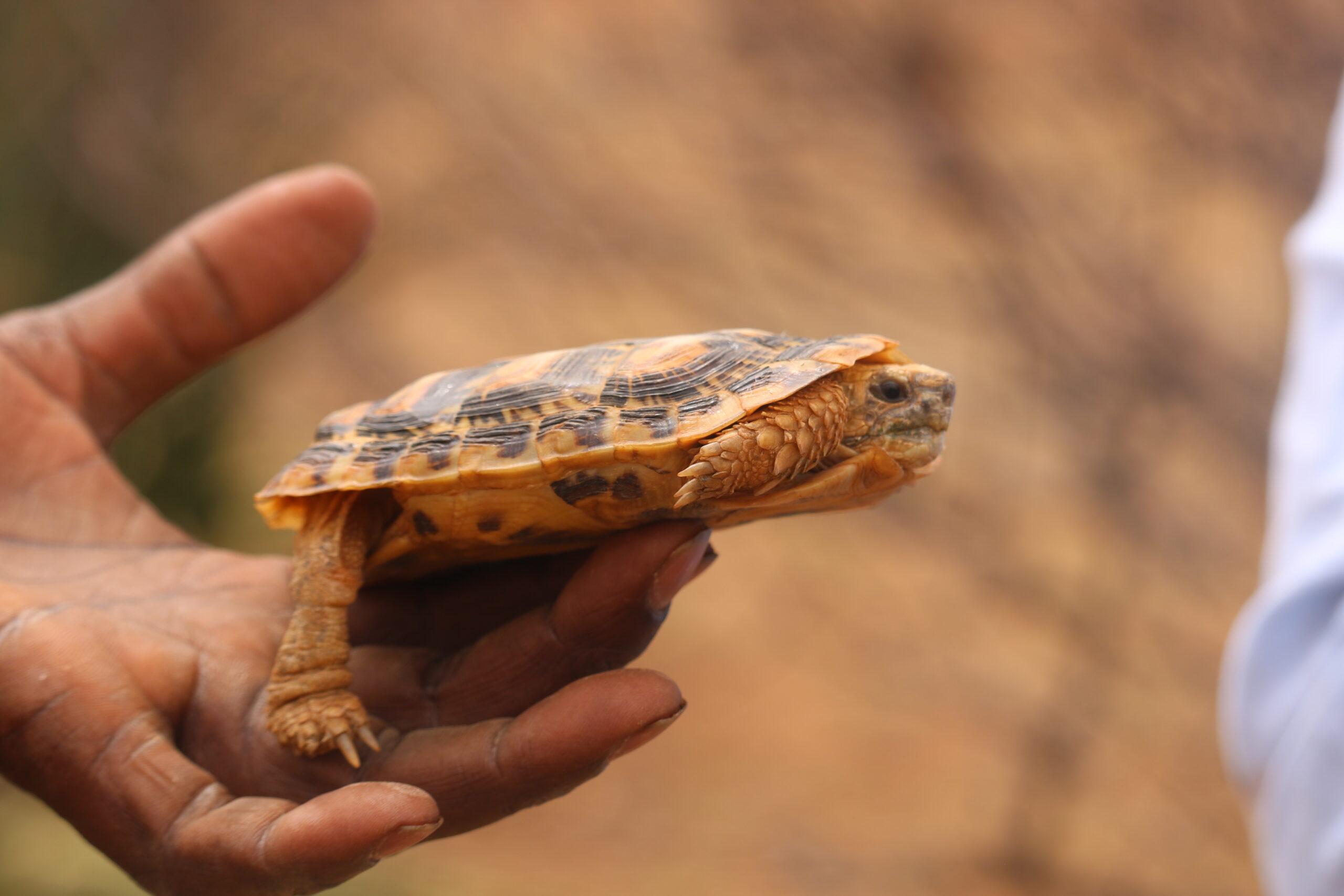
Researchers from Lewa and the National Museum of Kenya spent a week in a joint effort to establish the occurrence of the Pancake Tortoise in Lewa Wildlife Conservancy (LWC) and adjacent areas. 118 pancake tortoises were found in the region. These findings extend the distribution range of the species. Past studies have shown that the distribution of the Pancake Tortoise is mostly within the arid and semi-arid corridor from Marsabit County southwards to Kitui County. What follows after a series of similar surveys is to design an appropriate conservation strategy for the Pancake Tortoise on and around LWC supported by research data.
Rapid and pliable. The pancake tortoise is a morphologically and behaviorally distinct turtle. Their thin, flat, and flexible shell makes them the quickest tortoise. The pancake tortoise’s shell has numerous holes, making it lightweight and agile. Instead of sheltering in its shell, the pancake tortoise may flee swiftly. The pancake tortoise’s flexible shell helps it to live in tight rock cracks.

Dr.Dominic Maringa (PHD), Head of Conservation at Lewa Wildlife Conservancy, searching for a Pancake tortoise in a rock crevice
Pancake tortoises spend most of their time in rocky crevices. They are mostly solitary, but crevices can be inhabited by pairs or small groups. They have a life expectancy of more than 30 years. Appropriate habitat is not common or widespread; this species is classified as Critically Endangered on the International Union for Conservation of Nature (IUCN) Red List of Threatened Species.
Collection for the pet trade is the largest threat to the continued survival of African pancake tortoises. Because of their unique appearance combined with their small size, these tortoises are highly sought after for private hobbyists. Furthermore, because of their extremely specific habitat, pancake tortoises are sensitive to environmental destruction. Cultivation for agriculture and charcoal burning have reduced the amount of appropriate habitat for African pancake tortoises.
Pancake tortoises can be preyed upon by mongooses, wild dogs, and humans, but they have a variety of adaptations to help them to stay safe. The lightweight, flat shell allows them to escape danger quickly. When confronted by a predator, they flee to the crevices until the threat is gone. They rely on flexibility and speediness.

FUN FACT FUN FACT: When pancake tortoise hatch, they have a domed shell, like all other tortoises. However, as they grow, their shell flattens, staying true to the name.
________________________







